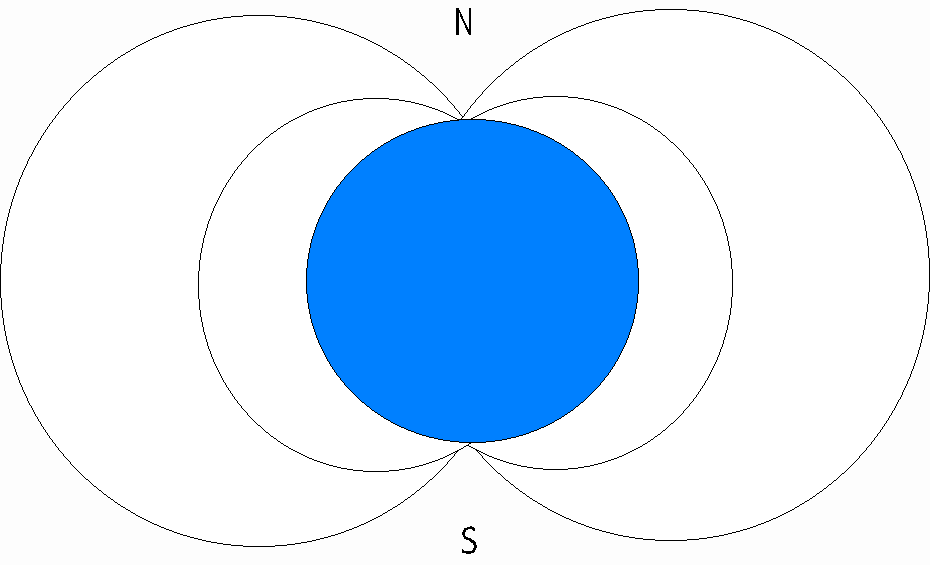
1. The Earth’s Magnetic Field
Objective: discovery of the Earth’s magnetic field and creation of a dip compass.
The Earth is enveloped in a magnetic field.
Our planet behaves as if an enormous bar magnet was positioned along its axis of rotation, with however a declination of 11° from it.
The points where the axis of the magnet would protrude from the earth’s surface are the magnetic poles. These magnetic poles are different from the geographical poles, and furthermore they move by about 8km each year; this is secular variation. Thus, the magnetic South Pole is currently located at 2,800km from the geographical South Pole, off Terre Adélie, whereas in 1909 Douglas Mawson found it in Victoria Land on the polar icecap.
The magnet is of course an image.
Although one is not completely sure, one thinks today that this magnetic field is created by the movement of nickel and iron in the external core of our planet (the layer of merged matter situated between 2,800 and 5,000 km beneath the Earth’s crust).

Visualisation of the lines of a magnetic field
To visualise a magnetic field basically similar to that of the Earth.
Necessary equipment
|
Steps to be followed :
The iron filings particles position themselves along the lines of the magnetic field, which as a result become visible.
One can see that the field lines are bent along the bar and almost vertical at the two poles of the magnet.
For an observer at any point of the planet, the magnetic field has two components.
One is the direction of the lines of the magnetic field, which gives us a standard compass by indicating North. It should be noted that the compass does not indicate the geographical North but the magnetic North. The angle between the two is declining, it varies over time.
The other is the declination of the field lines in comparison with horizontal. This depends on the place where one is positioned on the globe and it is measured with a magnetic needle turning on a horizontal axis. This is called a dip compass, and that is what we are going to construct.

The dip compass
Construction of a dip compass and comparison of the results between the classes and the Antarctic.
|
Necessary material
|
|
Steps to be
followed :
We have just created a dip compass. The pendulum is going to turn obliquely to the North because it is positioned in parallel between the two magnetic lines that surround the Earth from one pole to the other. The declination of the pendulum in relation to horizontal is the measurement that we are looking for. It will be taken with the aid of the reporter. According to the place where one finds oneself on the planet, this angle is different. It is about 65° in Europe, and 90° at the magnetic South Pole (vertical needle). At the expedition base camp, it will be close to vertical. This experiment will be carried out at the base camp and in the classes, and all the results will be compared. Furthermore, at the expedition base camp, it will be possible to see whether the standard compass is disturbed by its relative proximity to the magnetic South Pole. |
|
|
|
|